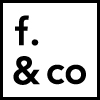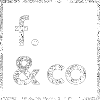–
The time it takes
The idea that the even the most traditional organizations are not immune to the imperatives of innovation and creativity has gained support over recent years with both policy-makers and researchers. The transformation of competitive environments as well as the internal renewal that stems from younger generations more familiar with technological tools have created imperatives for creative change, both in products and processes.
While in so-called "traditional industries", the numbers show that intellectual property now constitute the most significant submarket for innovative activities, the rise in legal protection instruments is accompanied by that of other strategic activities that stem from the knowledge-intensive activities of organizations, notably recourse to industrial secret and lead-time advantage seeking. Whereas many of these strategic possibilities have the potential to alter the latest stages of creative and innovative processes (the drafting of a patent application, for example, or the mutual contractualization of trade and/or industrial secrets), time-to-market imperatives are not only becoming quintessential to the productivist discourse, they are altering significantly the nature of firms' core competencies and the interaction between its different core trades.
Indeed, time-to-market is what characterizes the emanation of a novel idea from its early, imprecise articulation to the highly formalized commercialization, and influences much more than the the rate at which various stage-gating decisional processes take place. As a managerial imperative, time-to-market modifies not only the simple stream of knowledge-intensive activities, but also further transforms the identity of certain core functions of the firm, by both constraining and enhancing the significance of artistic and creative individuals and their endeavours.
The Catalan manufacturer Roca, for instance, has undergone an important transformation of its functioning over the last years. A prime player in the faucet and washroom equipment industry, it has traditionally been known as a primarily design-led company whose aesthetics accounted for its commercial success. While the design component remains an absolute priority for the Barcelona-based company, it recognized in the early 2000s (after more than 80 years in operation) that it would have to take a new view on its core business and increasingly integrate market-based thinking in order to make products that would be desirable, aesthetically pleasing and technologically sound.
A great Roca design, with swimmers at the bottom.
The competitive pressure put on Roca's activities by the internationalization of many key players who, through various methods, have combined market-led considerations with the design process, has forced older companies to engage in structural and discursive isomorphism where the unicity of particular design-led undertakings is being influenced (at least slightly and, one would argue, increasingly) by a sort of "mass market for high-end products." In this vein, Roca has created its first-ever marketing department in 2005.
The inverted relationship between time-to-market and complexity
of products is described by Josep Congost, Design Manager at Roca
Although lead-time imperatives may seem to be having a negative effect on the genuinely artistic and creative processes of thought that design-based companies engage into, an alternative view reveals that the dictated reduction of time authorized for creative iterations during the early stages of innovation frees "creative time" for the designers to engage more often in truly explorative work. Instead of devoting significant resources to the detailed-oriented, scientific-engineering part of their work, they may more rapidly move on, and switch to the redefinition of new bases onto which they may apply their imaginative minds.
This is exemplified in the case of Etesia, a Strasbourg-based company that specializes in the production of industrial-grade lawnmowers. As we wrote elsewhere,
"the introduction of standardized design tools to increase lead-time advantages implies […] the standardization of the different parts of the process using compatible software ,allowing for the introduction of modularity […], accelerating the establishment of shared meanings and shared languages. […] As time-to-market translates into lasting lead-time advantages, companies are to investigate, explore and create further than they were before."
What this means is that the refocalization on market-based imperatives, while it may seem to have a uniquely detrimental effect on creative-imaginative activities, also works to promote it. In clearly defining the "rules of the game", it permits further and more refined exploration of certain areas of thought and creation. In doing so, it risks changing more than the simple "rules of the game", but also the "rules" of the organization, that is, its mission, vision, hopes and purpose. That way, the drifting of industrial enterprises' structures towards more market-led, time-to-market-oriented processes alters their identities more than slightly.
Thus, lead-time advantage seeking certainly isn't a silver bullet. It casts both a shadow and a light on the very nature of the firms' activities. It touches the heart of the modern problematic of innovation of creativity, which goes beyond so-called "creative industries" by showing the incessant change in the structures and preferences of societies and the markets they produce. Alas, we'll finish this post quickly and, hopefully, by the time it is posted, the market for our ideas will not be entirely different from what it was this morning.


